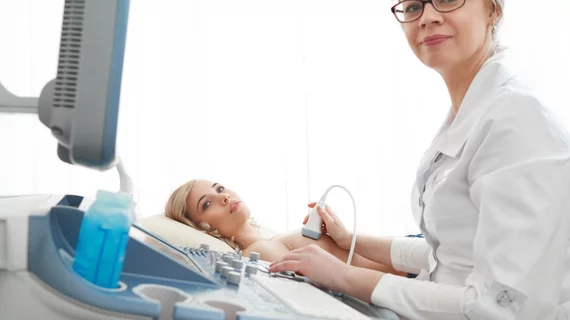Ultrasound outperforms four other modalities at assessing margins during breast surgery
A new meta-analysis comparing the diagnostic performance of four different breast imaging modalities for margin assessment during breast surgery revealed ultrasound to be the most accurate option.
Accurate margin assessment during breast-conserving surgery for cancer patients is critical, as taking too much or too little tissue inevitably leads to additional surgery. In fact, repeat surgery as a result of positive margins is reported in 9%-36% of cases managed across international breast cancer units.
“Efforts are made to find accurate and rapid intra-operative methods identifying positive margins, so the surgeon can immediately remove additional breast tissue and achieve negative margins in a single surgery,” corresponding author Irina Palimaru Manhoobi, MD, with the Department of Radiology at Aarhus University Hospital in Denmark, and co-authors explained.
The doctors chose to compare four different intra-operative modalities for their research: radiography, digital breast tomosynthesis (DBT), micro-CT and ultrasound. They panned through 798 unique records and calculated the pooled sensitivity, specificity and area under the curve (AUC) for each group.
The results of the pooled sensitivity, specificity and AUC were as follows:
Radiography: 52%, 77%, 60%.
Digital breast tomosynthesis: 67%, 76%, 76%.
Micro-CT: 68%, 69%, 72%.
Ultrasound: 72%, 78%, 80%.
While each modality has its benefits, the diagnostic performance of intraoperative ultrasound was superior in each measurable category. This could be due, in part, to the person operating the US—a breast radiologist was operating the transducer in over half of the studies.
The doctors noted that although US performed better, there is limited research on its use intraoperatively, and achieving optimal operator performance is taxing on resources.
“It is too resource demanding for a breast radiologist to attend the operating theater and perform the intraoperative ultrasound of the specimen, and it takes time for a breast surgeon to achieve same level of experience with ultrasound as a breast radiologist,” the doctors argued. “In our opinion, it is not realistic that ultrasound of the specimen will be implemented in the surgical workflow, although ultrasound is easily available at many breast care units.”
The authors of the study conclude that more improvement on margin assessment imaging methods is needed before definitive guidance is given.
You can view the detailed research in Academic Radiology.

